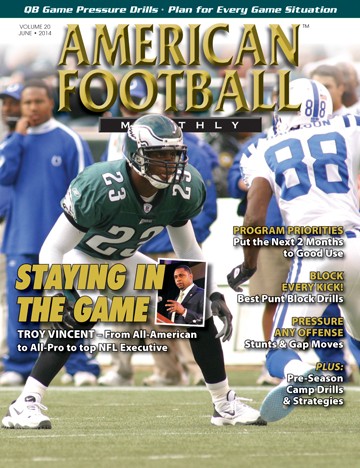Article CategoriesAFM Magazine
|
Situational Analysis – Having a specific gameplan for each offensive situation enhances your chances of success.by: Kefense HynsonCo-Offensive Coordinator, University of Montana © More from this issue We teach our players to develop a thorough understanding of situational offense: its importance, its relevance, and the consequences of not recognizing and reacting to the many situations that exist and ultimately define our game. Here are eight main situations and how we develop our players’ understanding of them. During the beginning of fall camp, as well as in the opening of spring practice, we implement a well-planned-out installation that will be the foundation of our offensive football for the season. Along with the Xs and Os however, we also install the situations that occur as they relate to these specific plays. We install situations to instill in our players the importance of execution with the situation in mind.
|
|
|||||||
| HOME |
MAGAZINE |
SUBSCRIBE | ONLINE COLUMNISTS | COACHING VIDEOS |
Copyright 2025, AmericanFootballMonthly.com
All Rights Reserved





